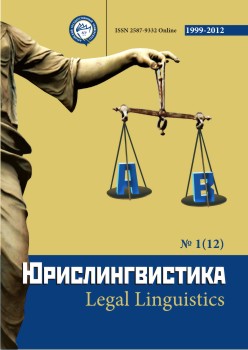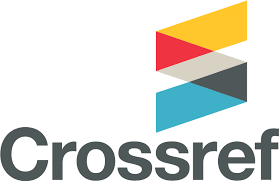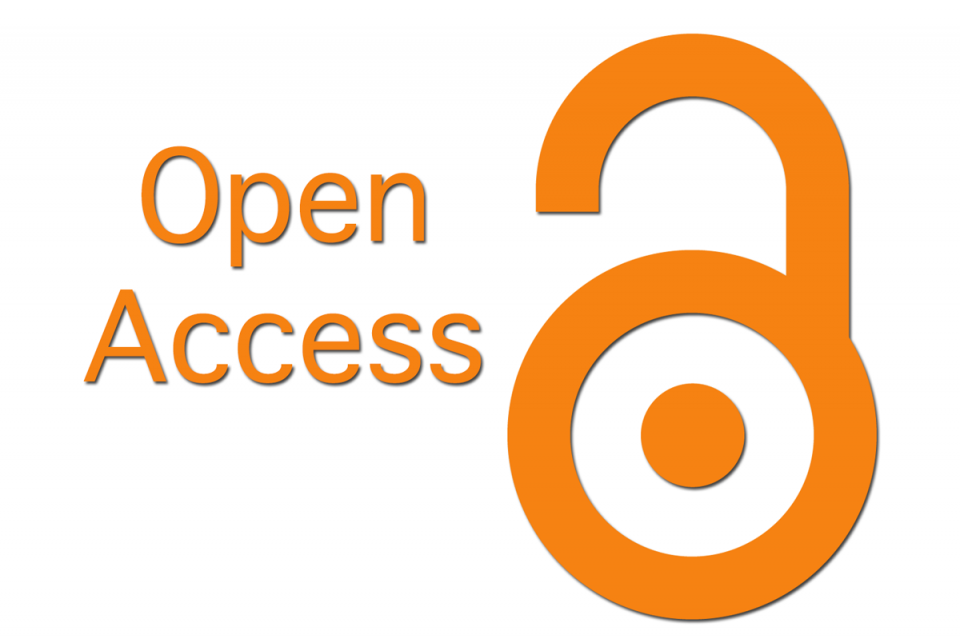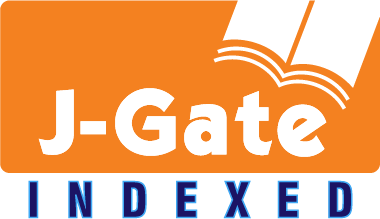ЛИНГВОПРАВОВОЕ ПРОСТРАНСТВО ТЕКСТА: К ПОСТАНОВКЕ ПРОБЛЕМЫ (НА МАТЕРИАЛЕ АНАЛИЗА ЛИНГВИСТИЧЕСКИХ ЭКСПЕРТИЗ РОО «АЛЭКС»)
Аннотация
В статье на основе анализа лингвистических экспертиз рассматривается вопрос о составляющих лингвоправового пространства текста, которое можно смоделировать как уровневую структуру языковых и собственно дискурсивных средств. Делается вывод о том, что реконструкция лингвоправового текстового пространства позволит определить основную интенцию автора и/или коммуникативное намерение говорящего (если текст представляет собой запись устной речи), описать нюансы значений инвективной лексики, так как при определѐнных ситуациях бранные лексемы могут менять свою направленность.
Скачивания
Metrics
Литература
Голев, Н. Д. Юридизация естественного языка как лингвистическая проблема /
Н. Д. Голев // Юрислингвистика-2. Русский язык в его естественном и 60
юридическом бытии. – Барнаул, 2000.
Жельвис, В. И. Поле брани: сквернословие как социальная проблема в языках и
культурах мира / В. И. Жельвис. – М., 2001.
Сидорова, Т. А. Актуализация речевой агрессии как признак юридизации
текстовых единиц / Т. А. Сидорова // Язык современных СМИ: основные
проблемы и тенденции. Материалы научно-практической конференции. – Н.
Новгород, 2006. – С. 15–19.
Третьякова, В. С. Конфликт глазами лингвиста / В. С. Третьякова //
Юрислингвистика-2: русский язык в его естественном и юридическом бытии. –
Барнаул, 2000.
Чернышова, Т. В. Юрислингвистическая экспертиза газетно-публицистических
текстов с неявной коммуникативной функцией высказывания / Т. В. Чернышова
// Юрислингвистика-3: проблемы юрислингвистической экспертизы. – Барнаул,
Copyright (c) 2017 Юрислингвистика

Это произведение доступно по лицензии Creative Commons «Attribution» («Атрибуция») 4.0 Всемирная.
Авторы, которые публикуются в данном журнале, соглашаются со следующими условиями:
1. Авторы сохраняют за собой авторские права на работу и передают журналу право первой публикации вместе с работой, одновременно лицензируя ее на условиях Creative Commons Attribution License, которая позволяет другим распространять данную работу с обязательным указанием авторства данной работы и ссылкой на оригинальную публикацию в этом журнале.
2. Авторы сохраняют право заключать отдельные, дополнительные контрактные соглашения на неэксклюзивное распространение версии работы, опубликованной этим журналом (например, разместить ее в университетском хранилище или опубликовать ее в книге), со ссылкой на оригинальную публикацию в этом журнале.
3. Авторам разрешается размещать их работу в сети Интернет (например, в университетском хранилище или на их персональном веб-сайте) до и во время процесса рассмотрения ее данным журналом, так как это может привести к продуктивному обсуждению, а также к большему количеству ссылок на данную опубликованную работу (Смотри The Effect of Open Access).











